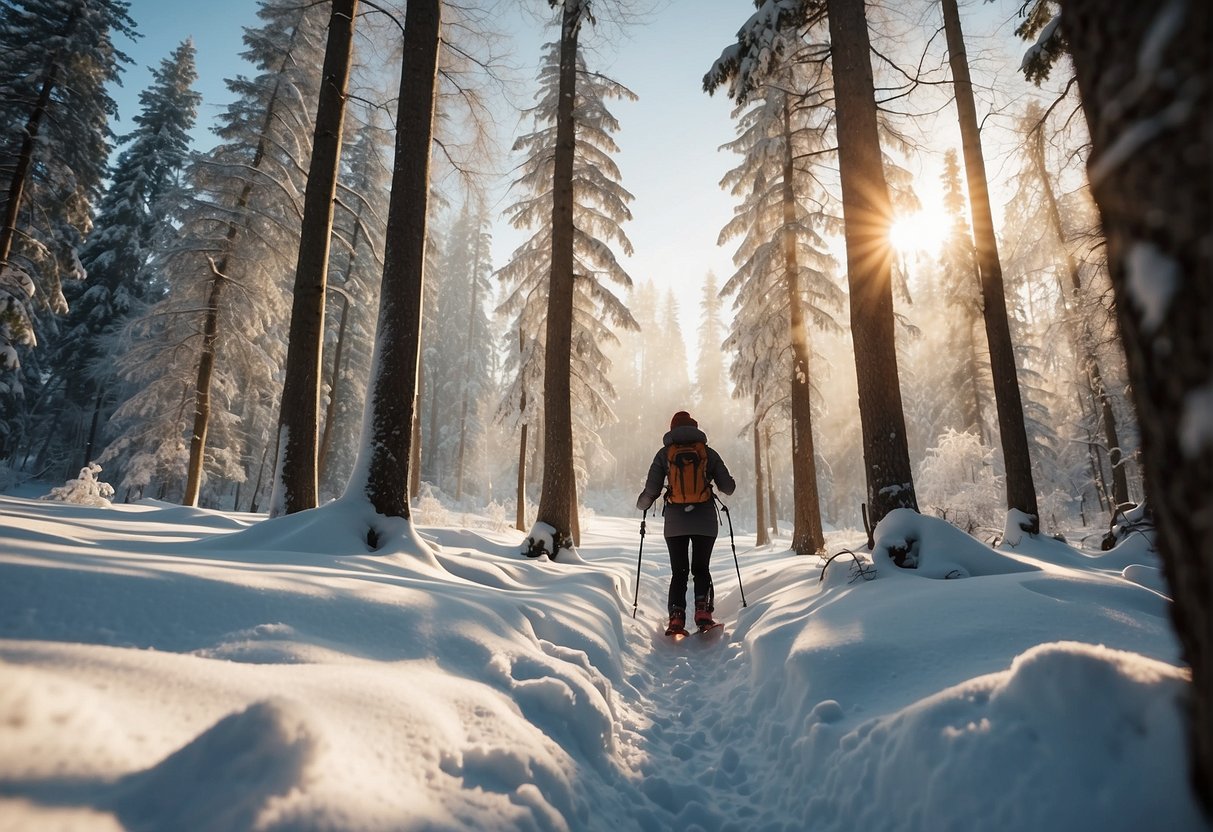📦 FREE Shipping
How Many Calories Does Snowshoeing Burn 2024? Surprising Insights

Trek through the snow and torch calories with “How Many Calories Does Snowshoeing Burn? Surprising Insights,” revealing the surprising fitness benefits of this winter activity.
How Many Calories Does Snowshoeing Burn?
Snowshoeing is a dynamic activity that can burn between 400 to 600 calories per hour, offering you an efficient way to exercise in the snow. The energy you exert translates into calories burned, measured using a unit called MET (Metabolic Equivalent of Task). Moderately snowshoeing pegs the MET value at 5.3, meaning you’re expending 5.3 times the energy as compared to sitting quietly.
Factors Affecting Caloric Expenditure
Several elements come into play when calculating your caloric expenditure during snowshoeing:
- Your Weight: The heavier you are, the more calories you burn. For instance, a person weighing 180 pounds burns approximately 7.573 calories per minute at a moderate effort, which sums up to around 454 calories per hour.
- Intensity of Activity: A vigorous effort can substantially increase your calorie burn. A 180-pound individual may burn as much as 856 calories per hour with vigorous snowshoeing.
- Duration: The longer you stay on the trails, the more calories you torch.
Health and Fitness Benefits of Snowshoeing

Cardiovascular and Muscular Benefits
Snowshoeing is an exceptional cardio workout. Your heart rate elevates as you traverse over the snow, leading to improved cardiovascular health. Pacing through the powdery terrain, you could burn approximately 420 to 1,000 calories per hour, depending on your weight and intensity of the activity.
This calorie burn is significant when compared to many other exercises; snowshoeing can outpace jogging in terms of energy expenditure. This is because walking through snow requires more effort than walking on a clear path due to resistance.
Moreover, snowshoeing is a low-impact activity, which means it’s gentle on your joints while still being tough on calories. Looking to boost your muscle strength? Tackling that snow-covered hill targets your leg muscles, granting you muscular benefits as well.
Psychological Benefits and Accessibility
Stepping out in the cold for a snowshoeing adventure can do wonders for your mental well-being. Exposure to sunlight in the fresh air can increase your Vitamin D intake and raise serotonin levels, potentially reducing the effects of seasonal depression.
The calming influence of nature, combined with the cardiovascular exercise of snowshoeing, can lead to greater mood control and a boost in your confidence. Plus, it’s highly accessible. No need for expensive equipment or gym memberships—just a pair of snowshoes, and you’re ready to tread through a winter wonderland, making it a low impact, yet effective way to enhance your fitness and health.
Snowshoeing Practicalities

Snowshoeing Equipment
To get started, you’ll need a pair of snowshoes. Snowshoes distribute your weight over a large area, preventing you from sinking too deeply into the snow. Here’s what you should know about your equipment:
- Snowshoes: Choose a pair based on your weight, the conditions of the trails, and whether you’ll be walking or running. Men’s and women’s snowshoes differ in size and fit, so ensure you get the right type for you.
- Layers: To keep warm and dry, dress in breathable, moisture-wicking layers. Start with a thermal base layer and add more as needed. It’s key to manage your body heat during the workout.
- Poles: Many people use poles to stabilize and engage the upper body, enhancing the workout.
- Renting Options: If you’re new to snowshoeing or trying it out, consider renting equipment from local winter sport shops.
Choosing Your Snowshoeing Environment
The environment where you snowshoe will greatly affect your experience and the number of calories you burn. When deciding on a location:
- Snowshoeing Trails: Seek marked trails at local parks or dedicated snowshoeing centers. These trails are meant for snowshoers of all levels and often feature varying terrain.
- Off-Trail: If you’re experienced, you might take your adventure off-trail for a more intense workout. Deep snow and uneven terrain require more effort, so you’ll burn more calories.
- Other Winter Activities: Snowshoeing can be a fantastic alternative to cross-country skiing or snowboarding, so find areas where trails are not reserved exclusively for those sports.
- Accessibility: You might find viable trails outside your front door, like sidewalks or paths in your neighborhood. If you prefer a wilderness setting, national parks and forests offer larger, more scenic snowshoeing spaces during the winter months.
FAQ:
Is snowshoeing good for weight loss?
Yes, snowshoeing is effective for weight loss, as it burns significant calories and can create a caloric deficit.
Is snowshoeing a good workout?
Snowshoeing is an excellent workout, providing cardiovascular benefits and engaging various muscle groups due to walking in snow resistance.
Does snowshoeing burn more calories than walking?
Snowshoeing burns more calories than walking due to the added weight of the snowshoes and the resistance of the snow.
Do you burn more calories walking in snow?
Yes, you burn more calories walking in snow because your body works harder to navigate the unstable and resistant terrain.
If this article about the question: “How Many Calories Does Snowshoeing Burn” helped you, don’t forget to leave us a comment down below about what you think of the article.

